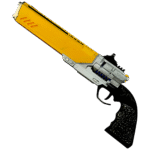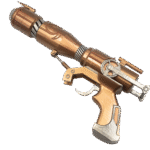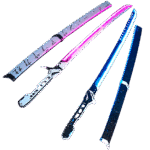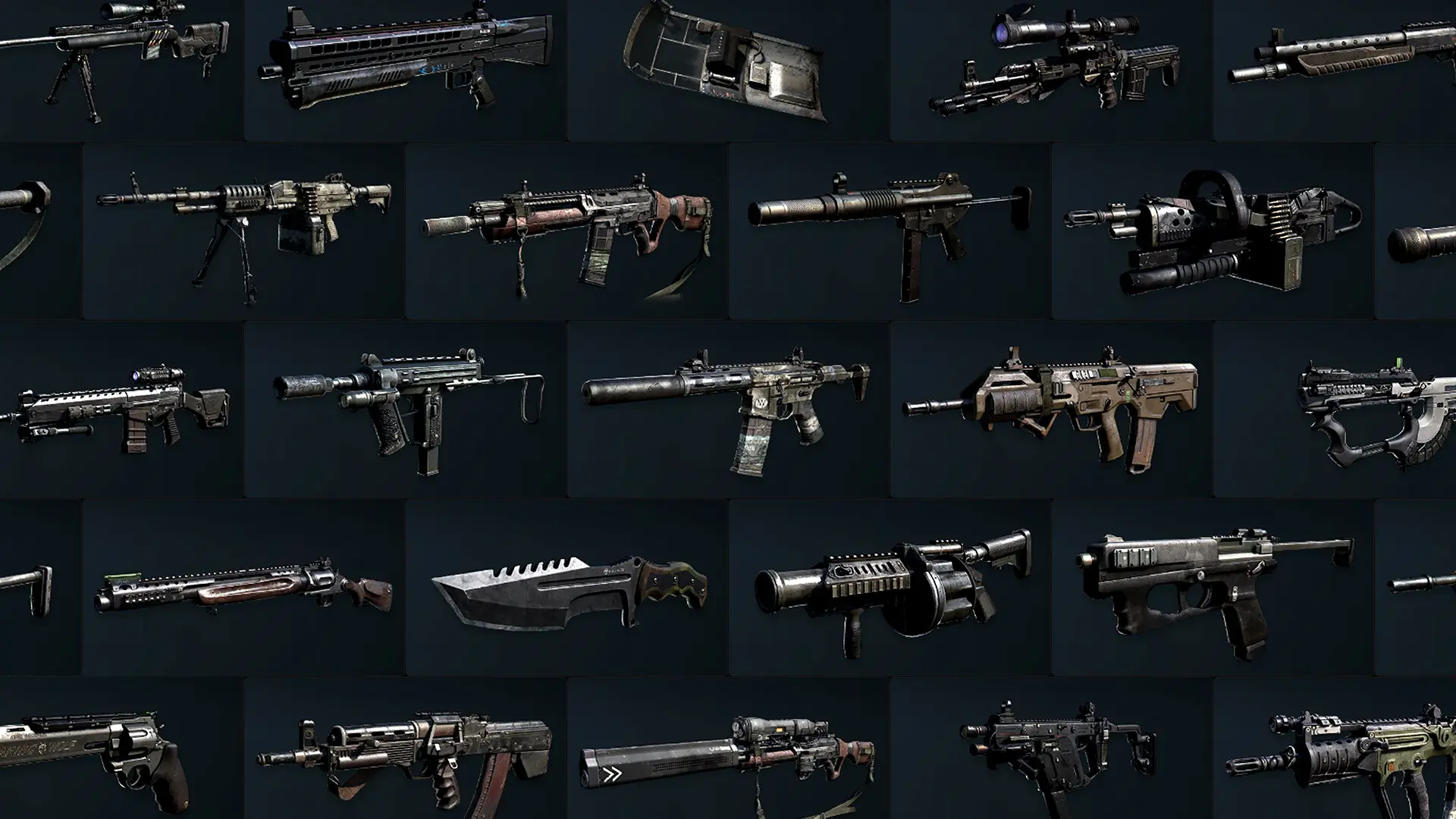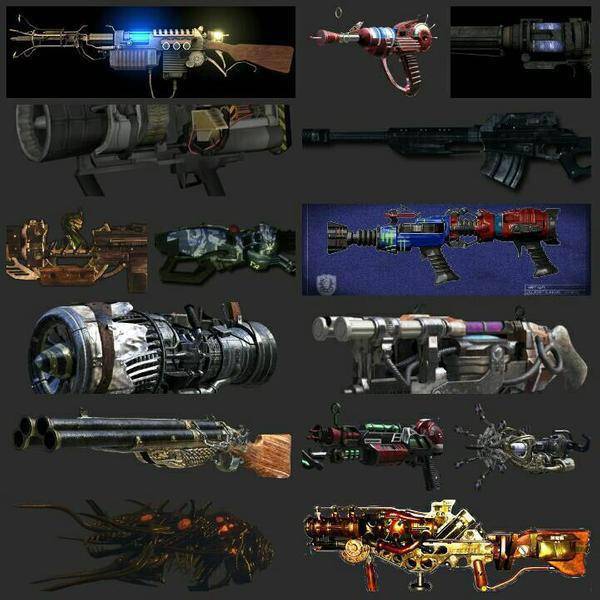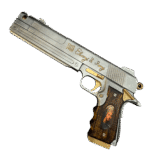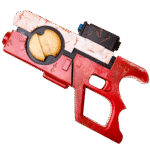The Evolution of Guns in Call of Duty
In the virtual world of Call of Duty, firepower reigns supreme. From the early days of simple handguns to the cutting-edge assault rifles and devastating sniper rifles of today, the arsenal of weapons available to players has evolved dramatically over the years. In this article, we delve deep into the captivating history of guns in Call of Duty, exploring the extraordinary range of firearms that have graced the game and shaped its virtual warfare experience.
From iconic World War II rifles like the M1 Garand and the Thompson submachine gun, to the futuristic energy weapons of the Black Ops series, each game installment brings its own unique selection of weapons to the table. We’ll uncover the inspiration behind these virtual firearms, examine how they have been meticulously crafted to balance gameplay, and discuss notable weapons that have stood out as fan favorites.
Join us on this thrilling journey through the evolution of guns in, where explosive action and fierce battles await. Get ready to immerse yourself in the ultimate arsenal of virtual warfare.
Check out our COD prop collection here!
Any ray gun fans? Check out our new Ray Gun LED!
Of course we have other props as well here!
The early days: Guns in the original Call of Duty games
The original Call of Duty games, set against the backdrop of World War II, introduced players to a diverse arsenal of vintage firearms that captured the essence of the era. These early installments in the franchise laid the foundation for the iconic gunplay that would become a hallmark of the series.
One of the most recognizable weapons from the original Call of Duty games was the M1 Garand, a powerful and accurate semi-automatic rifle that was a staple of the American infantry. The satisfying “ping” sound it made when the clip was ejected became an instantly recognizable audio cue, instilling a sense of historical authenticity and immersion for players. Alongside the M1 Garand, the Thompson submachine gun, with its distinctive drum magazine, was another iconic weapon that allowed players to engage in close-quarters combat with rapid bursts of fire.
The early Call of Duty games also featured other classic World War II firearms, such as the bolt-action Kar98k rifle, the reliable M1911 pistol, and the devastating Panzerschreck anti-tank weapon. These weapons, each with their own unique characteristics and strengths, required players to carefully consider their tactical approach and engage in thoughtful weapon selection to overcome the challenges they faced on the virtual battlefield.
Advancements in weaponry: How Call of Duty has evolved its gun arsenal over the years
As the Call of Duty franchise progressed, the developers continuously expanded and refined the selection of weapons available to players, reflecting the technological advancements and shifting conflicts that have shaped modern warfare.
The transition from the World War II setting to the modern era in the Call of Duty: Modern Warfare series introduced a new generation of firearms, including the iconic M4 Carbine and the versatile AK-47 assault rifle. These weapons, along with a wide array of submachine guns, sniper rifles, and heavy weapons, provided players with a more diverse and adaptable arsenal to navigate the complexities of contemporary combat.
The subsequent shift to futuristic and speculative settings, such as the Black Ops and Advanced Warfare series, pushed the boundaries of the virtual gun arsenal even further. Players were introduced to cutting-edge energy weapons, advanced railguns, and even prototype exoskeleton-mounted firearms that blended science fiction with the realities of modern military technology. These imaginative and innovative weapons not only added a sense of excitement and novelty to the gameplay but also challenged players to rethink their strategies and adapt to the changing nature of virtual warfare.
Across these various eras, the Call of Duty franchise has consistently demonstrated a remarkable attention to detail, ensuring that each weapon feels distinct, authentic, and true to its real-world counterpart. The developers have meticulously recreated the visual and audio characteristics of these firearms, from the distinctive sound of a bolt-action rifle to the recoil patterns and muzzle flash of automatic weapons. This attention to detail has contributed to the immersive and satisfying gunplay that has become a hallmark of the Call of Duty experience.
Iconic guns in Call of Duty: Exploring fan-favorite weapons and their impact on gameplay
Throughout the Call of Duty franchise, certain weapons have emerged as true fan favorites, capturing the hearts and minds of players worldwide. These iconic firearms have not only left a lasting impression but have also significantly influenced the overall gameplay experience.
One such weapon is the M16 assault rifle, a staple of the Modern Warfare series. With its burst-fire capabilities and impressive accuracy, the M16 has become a go-to choice for players who value precision and control in their engagements. The weapon’s versatility, combined with its iconic visual design and satisfying recoil pattern, has made it a beloved choice among Call of Duty enthusiasts.
Another iconic weapon is the Intervention sniper rifle, which has graced the Call of Duty: Modern Warfare 2 and Call of Duty: Modern Warfare 3 installments. The Intervention’s devastating one-shot-kill potential, coupled with its sleek and distinctive appearance, has earned it a cult following among players who revel in the thrill of long-range, high-stakes sniping. The Intervention’s impact on gameplay has been profound, as it has encouraged the development of specialized sniper roles and playstyles within the broader Call of Duty community.
The Desert Eagle, a powerful and iconic handgun, has also left an indelible mark on the Call of Duty franchise. Featuring a distinctive visual design and a powerful punch, the Desert Eagle has become a symbol of player skill and bravado, often used in stylized killcams and highlight reels. Its high damage output and unique characteristics have made it a go-to choice for players who prioritize style and personal flair over pure efficiency.
These iconic weapons, and many others like them, have not only captured the imagination of players but have also influenced the overall meta and balance of the Call of Duty games. Their lasting appeal and impact on the gameplay experience speak to the developers’ commitment to crafting a diverse and engaging virtual arsenal that caters to a wide range of player preferences and playstyles.
Customization options: The rise of weapon attachments and personalization in Call of Duty
As the Call of Duty franchise has evolved, one of the most significant advancements has been the introduction and expansion of weapon customization options. Players are now able to tailor their firearms to suit their individual preferences and playstyles, further enhancing the depth and versatility of the virtual arsenal.
The integration of weapon attachments, such as scopes, suppressors, and extended magazines, has allowed players to fine-tune the performance of their guns to meet their specific needs. Whether they prioritize long-range accuracy, close-quarters lethality, or stealth, players can now adapt their loadouts to the demands of the battlefield. This level of customization has not only added a new layer of strategic depth to the gameplay but has also encouraged experimentation and the development of unique weapon builds.
Beyond just functional attachments, the Call of Duty series has also embraced the concept of weapon personalization, allowing players to express their creativity and individuality through the visual customization of their firearms. From intricate camo patterns to unique weapon charms and trinkets, players can now imbue their virtual guns with a sense of personal flair and style. This customization feature has become a source of pride and identity for many players, as they proudly showcase their personalized weapons in the heat of battle.
The integration of these customization options has had a profound impact on the overall Call of Duty experience. Players are now able to tailor their loadouts to their specific playstyles, creating a more diverse and dynamic meta that encourages strategic thinking and adaptability. The ability to personalize one’s weapons has also fostered a sense of ownership and investment in the virtual arsenal, further deepening the connection between players and the firearms they wield.
Balancing gameplay: The challenge of creating a diverse and fair gun meta in Call of Duty
As the Call of Duty franchise has expanded its virtual arsenal, the developers have faced the ongoing challenge of maintaining a balanced and diverse gun meta that caters to a wide range of player preferences and playstyles. Achieving this delicate balance is crucial to ensuring that the gameplay remains engaging, fair, and enjoyable for all participants.
One of the primary considerations in this balancing act is ensuring that no single weapon or class of weapons dominates the meta to the point of overshadowing all other options. The developers must carefully analyze the performance characteristics of each firearm, taking into account factors such as damage output, rate of fire, recoil patterns, and effective range. By fine-tuning these variables, they can create a more level playing field where multiple weapons are viable and viable in different situations.
Another key aspect of balancing the gun meta is addressing the issue of power creep, where newer and more powerful weapons are introduced, rendering older firearms obsolete. The Call of Duty developers must navigate this challenge by carefully introducing new weapons that offer distinct strengths and weaknesses, rather than simply creating a linear progression of increasingly powerful firearms. This approach ensures that players are presented with meaningful choices and that the overall meta remains diverse and engaging.
The introduction of weapon attachments and customization options has further complicated the balancing equation, as players can now tailor their firearms to suit their individual preferences. The developers must carefully consider how these attachments impact the overall performance and viability of each weapon, ensuring that no single attachment combination becomes overpowered or undermines the intended balance of the meta.
Achieving this delicate balance is an ongoing process, as the Call of Duty franchise continues to evolve and introduce new weapons and gameplay mechanics. The developers must remain vigilant, closely monitoring player feedback and data to make necessary adjustments and maintain a fair and engaging gun meta that caters to the diverse needs and preferences of the Call of Duty community.
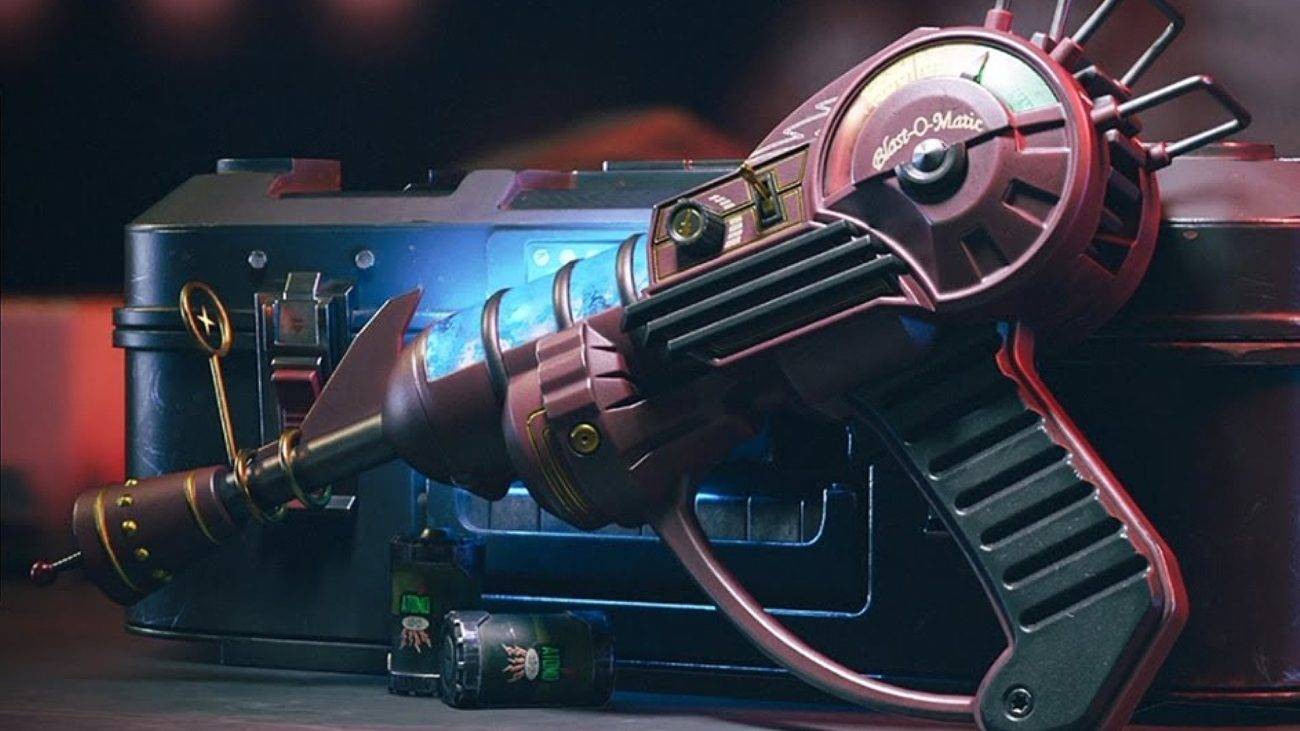
Weapon unlock systems: Understanding the progression and rewards tied to acquiring new guns
The Call of Duty franchise has long been known for its robust progression systems, which not only provide a sense of accomplishment and investment for players but also serve as a key driver of engagement and replayability. At the heart of this progression system lies the weapon unlock system, which allows players to gradually expand their virtual arsenal as they level up and complete various in-game challenges.
The weapon unlock system in Call of Duty typically follows a linear progression, where players start with a limited selection of basic firearms and gradually unlock new and more powerful weapons as they advance through the game’s levels or tiers. This progression system not only encourages players to continue playing and improving their skills but also creates a sense of anticipation and excitement as they work towards unlocking their next desired weapon.
In addition to the linear progression, the Call of Duty weapon unlock system often incorporates a variety of challenges and objectives that players must complete to unlock specific firearms. These challenges can range from reaching a certain level of proficiency with a particular weapon class to completing specialized in-game tasks, such as achieving a certain number of kills or completing a specific game mode. By tying weapon unlocks to these challenges, the developers encourage players to explore different playstyles and strategies, further enhancing the depth and replayability of the overall experience.
The rewards associated with unlocking new weapons in Call of Duty go beyond just the satisfaction of acquiring a new firearm. Many games in the franchise also offer cosmetic or functional upgrades, such as unique weapon skins, attachments, or even entirely new weapon variants, that can be unlocked through the progression system. These additional rewards not only provide a sense of visual customization and personalization but also further incentivize players to continue their journey of weapon acquisition and mastery.
The weapon unlock system in Call of Duty has become a cornerstone of the franchise, serving as a powerful driver of player engagement and investment. By carefully balancing the progression, challenges, and rewards associated with acquiring new firearms, the developers have created a compelling loop that keeps players coming back, constantly striving to expand their virtual arsenal and hone their skills on the digital battlefield.
Competitive scene: How the evolution of guns has influenced Call of Duty esports
The evolution of guns in the Call of Duty franchise has had a significant impact on the game’s competitive scene, shaping the strategies, playstyles, and meta that define the highest levels of virtual warfare.
As the weapon selection in Call of Duty has expanded and diversified over the years, the competitive landscape has had to adapt and evolve accordingly. Professional players and teams have had to carefully analyze the strengths and weaknesses of each firearm, identifying the optimal weapon combinations and attachments that will give them a competitive edge in high-stakes tournaments and leagues.
The introduction of newer, more advanced weapons has often led to shifts in the competitive meta, as players and teams experiment with different loadouts and strategies to gain an advantage. This dynamic nature of the gun meta has challenged professional players to remain adaptable and innovative, constantly refining their skills and tactics to stay ahead of the curve.
One notable example of the impact of weapon evolution on the Call of Duty competitive scene is the rise and fall of certain “overpowered” firearms. When a weapon becomes too dominant in the meta, it can stifle strategic diversity and lead to a homogenized playstyle across the competitive landscape. In response, the developers have often had to carefully balance or even nerf these overpowered weapons, forcing players to rethink their approaches and adapt to the changing landscape.
Beyond the specific weapon choices, the evolution of guns in Call of Duty has also influenced the overall pacing and flow of competitive matches. The introduction of longer-range, more accurate firearms, for instance, has encouraged a more methodical, tactical approach, while the addition of faster-firing, high-mobility weapons has led to more frenetic, close-quarters engagements. These shifts in the virtual battlefield have challenged players to develop new strategies and playstyles to remain competitive.
As the Call of Duty franchise continues to evolve, the competitive scene will undoubtedly continue to adapt and evolve alongside it. The developers’ commitment to maintaining a balanced and diverse gun meta will be crucial in ensuring that the competitive experience remains engaging, challenging, and true to the core essence of the Call of Duty franchise.
Future prospects: Speculating on the next generation of guns in Call of Duty
As the Call of Duty franchise looks towards the future, the anticipation for the next generation of virtual firearms is palpable. With the rapid advancements in real-world military technology and the ever-evolving nature of modern warfare, the possibilities for the future of guns in Call of Duty are both exciting and intriguing.
One area of speculation is the potential introduction of even more advanced and futuristic weapon systems, building upon the groundwork laid by the Black Ops and Advanced Warfare series. These could include energy-based weapons, coilgun-style railguns, or even directed-energy devices that offer unique and innovative gameplay mechanics. The integration of these cutting-edge firearms could push the boundaries of the virtual battlefield, challenging players to rethink their strategies and adapt to the ever-evolving nature of warfare.
Another direction the franchise could explore is the further refinement and diversification of the existing weapon classes. This could involve the introduction of new subtypes or variants within the established categories, such as specialized sniper rifles, lightweight carbines, or even hybrid weapons that blend the characteristics of multiple firearm types. By expanding the breadth and depth of the virtual arsenal, the developers could create an even more nuanced and strategic gameplay experience, catering to a wider range of player preferences and playstyles.
The potential for increased customization and personalization of weapons is another area of interest. As the Call of Duty franchise continues to evolve, players may be granted even more granular control over the performance and visual characteristics of their firearms. This could include the ability to fine-tune individual components, such as barrels, triggers, or sights, or the introduction of more comprehensive weapon crafting and modification systems that allow for truly unique and personalized loadouts.
Regardless of the specific direction the franchise takes, one thing is certain: the evolution of guns in Call of Duty will continue to be a driving force behind the series’ enduring appeal and immersive gameplay experience. As the virtual battlefield continues to evolve, players can look forward to an ever-expanding and captivating arsenal of firearms that will shape the future of virtual warfare.
Conclusion: The enduring appeal of Call of Duty’s ever-evolving gunplay
The evolution of guns in the Call of Duty franchise has been a captivating journey, one that has consistently captivated players and shaped the virtual battlefield in profound ways. From the iconic World War II-era firearms of the original games to the cutting-edge, futuristic weapons of today, the virtual arsenal has continuously expanded, offering players an ever-growing selection of firearms to master and employ in the heat of battle.
The attention to detail and authenticity that the developers have brought to the creation of these virtual weapons has been a hallmark of the Call of Duty experience. Each firearm, whether it’s the classic M1 Garand or the advanced energy weapons of the future, has been meticulously crafted to capture the essence of its real-world counterpart, providing players with a sense of immersion and historical context that few other games can match.
But the evolution of guns in Call of Duty goes beyond mere aesthetics and authenticity. The developers have consistently sought to balance the diverse array of firearms, ensuring that no single weapon or class dominates the meta, and that players are presented with meaningful choices and strategic considerations when selecting their loadouts. This delicate balancing act has been a testament to the developers’ commitment to creating a fair and engaging gameplay experience that caters to a wide range of player preferences and playstyles.
The impact of the evolving gun meta has been felt throughout the Call of Duty community, from the casual players who revel in the thrill of virtual warfare to the highly competitive esports scene, where the strategic and tactical implications of weapon selection are scrutinized and debated. The ability of the franchise to adapt and evolve its virtual arsenal in response to player feedback and the changing landscape of modern warfare has been a key factor in its enduring appeal and longevity.
As the Call of Duty franchise continues to push the boundaries of virtual warfare, the anticipation for the next generation of firearms and the unique gameplay experiences they will bring is palpable. Whether it’s the introduction of cutting-edge energy weapons or the refinement of existing firearm classes, the evolution of guns in Call of Duty will undoubtedly remain a central pillar of the series’ enduring appeal, captivating players and shaping the future of virtual combat for years to come.

